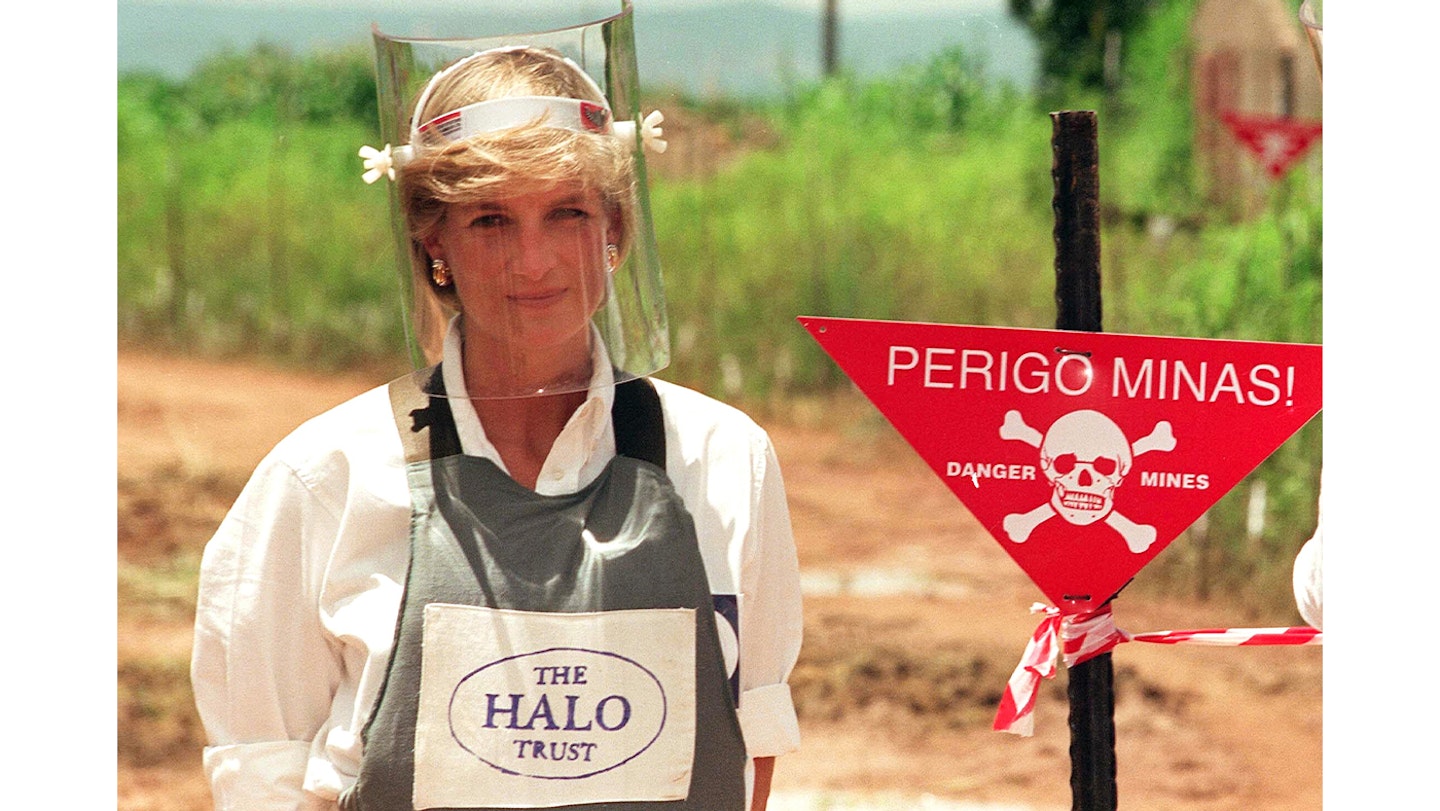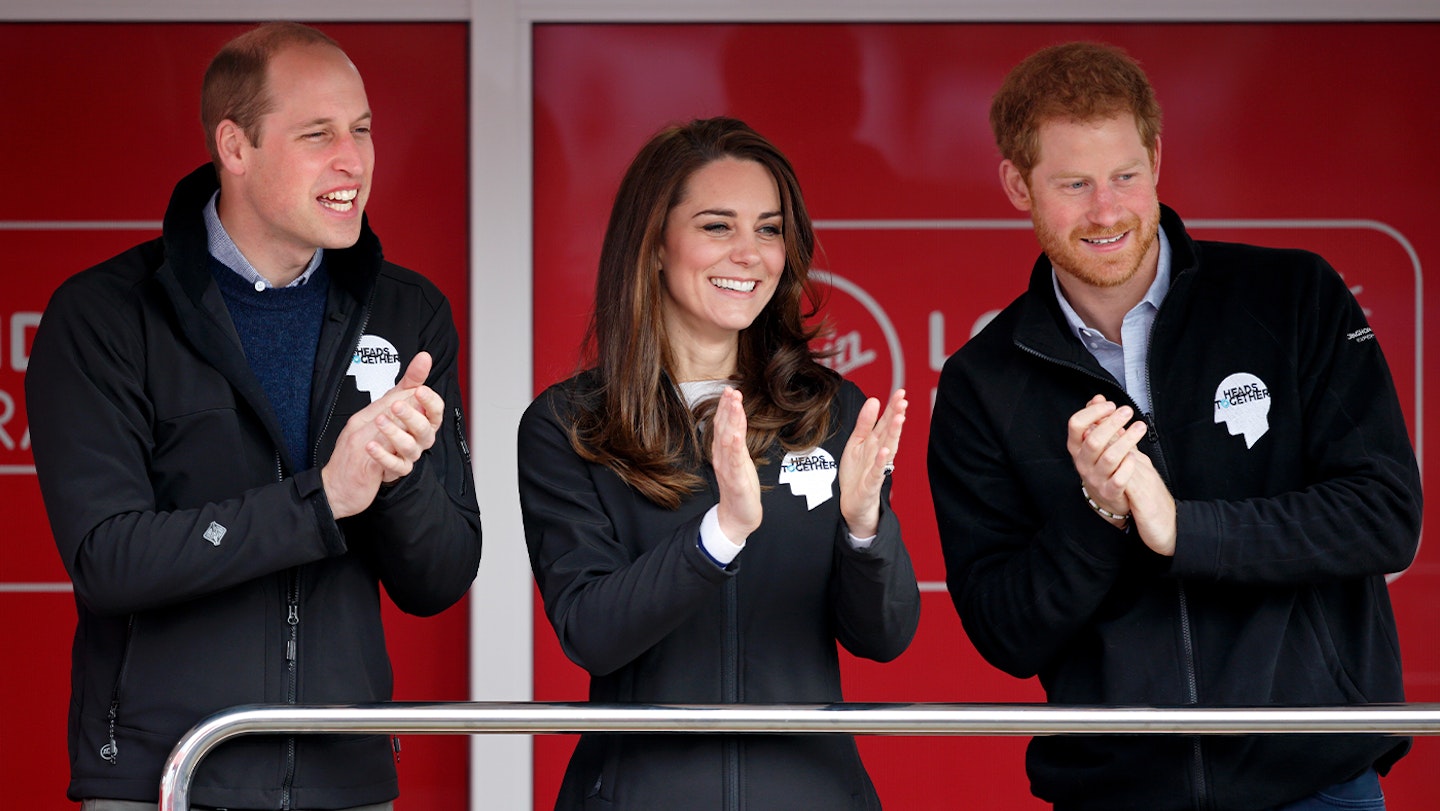Princess Diana was famous for her beauty, style and inspiring quotes but her most vivid legacy is her incredible charity work – which continues today through her son and daughter-in-law the Duke and Duchess of Cambridge.
Diana famously had a wonderful way with people. Those who met her were touched by her energy, warmth and heartfelt sympathy for those in need.
Shining a light on mental health issues
It was ground-breaking when she openly spoke out about having post-natal depression. In her 1995 Panorama interview she admitted she “didn’t want to get out of bed”, felt “misunderstood” and “very, very low” in herself. She even said that the depression she felt after having William led to her self-harming.
The interview was given at a time when there was a strong stigma surrounding mental health issues. By Diana speaking out, other mothers felt empowered to open up about their own struggles.
In Andrew Morton’s 1992 book Diana: Her True Story, she revealed she had also suffered with bulimia. She called it her ‘secret disease’, which had started in 1981.
After her admission, there was a sharp increase in the number of bulimia cases being reported.
The charities close to Diana's heart

During her lifetime Diana was the president or a patron of more than 100 charities, including Help The Aged, now AgeUK, and Barnardo’s.
But after her divorce in 1996 after it became clear Prince Charles and Camilla were more than friends, she decided to focus only on the charities closest to her heart.
In April 1987, she opened Britain’s first Aids ward at Middlesex hospital. At the time there was still a widespread lack of understanding about how HIV – the virus that can lead to Aids – was contracted.
Diana was keen to help remove stigma, even though the Queen expressed her disapproval. But the princess admitted she didn’t “go by a rule book” and “led from the heart and not the head”.
A photo of Diana shaking hands with HIV-positive patients, without wearing gloves, made front-page news around the world.
She said: “HIV does not make people dangerous to know. You can shake their hands and give them a hug. Heaven knows they need it.”
At the time of her death, Gavin Hart, of the National Aids Trust, told the BBC: “In our opinion, Diana was the foremost ambassador for Aids awareness on the planet and no one can fill her shoes in terms of the work she did.”
Diana was also a patron for Great Ormond Street Hospital and was often pictured comforting sick children. She said of her visits: “I make the trips at least three times a week, and spend up to four hours at a time with patients, holding their hands and talking to them. Some of them will live and some will die, but they all need to be loved while they’re here.”
Following her split from Charles, which freed her from her royal ties, Diana was able to take on more political causes. She set about campaigning to rid the world of landmines and raising funds for those injured by them.
After a visit to Angola, in Southern Africa, in 1997, Diana became the world’s most prominent anti-landmine advocate. During that trip, she was filmed touring landmine fields in a flak jacket and helmet – putting her own safety at risk as she walked through a newly cleared minefield.
Her crusading helped lead to an international mine ban treaty, now widely supported around the world.
Diana also travelled to countries with a high leprosy rate and became the patron of The Leprosy Mission in 1990 and visited hospitals in India, Nepal and Zimbabwe.
By spending time with patients and touching them, she dispelled the myth that the disease was highly contagious.
Diana's lasting legacy
Prince William carries on her legacy by supporting the organisation to this day.
Diana was patron of homeless charity Centrepoint from 1992. Both William and Harry were taken by Diana to see the help offered at the shelters. In 2005, when he was 23, William also became a patron of the charity.

He told a newspaper: “My mother introduced that sort of area to me a long time ago. It was a real eye-opener and I am very glad she did. It has been something I have held close to me for a long time.”
“It has always been my concern to touch people with leprosy, trying to show in a simple action that they are not reviled, nor are we repulsed,” she said.
After her death in August 1997, TheDiana, Princess of Wales Memorial Fund was set up in response to the donations that poured in. A staggering £138,645,000 was received by the time the fund closed in 2012. By then it had awarded 727 grants to 471 organisations.
In March 2013, William, Harry and Kate took over legal ownership of the fund, ensuring any future income is donated to charities she’d have wanted to support.
When asked if his mother would be proud of him, Prince Harry said: “I think she would be proud of the campaign, proud of everybody involved, proud of us. But specifically, proud of the UK for having this conversation.”
We can be safe in the knowledge that through the next generation of royals Diana’s incredible legacy of ‘giving’ will continue to live on.
